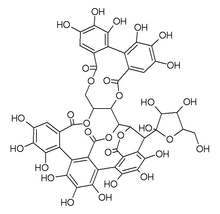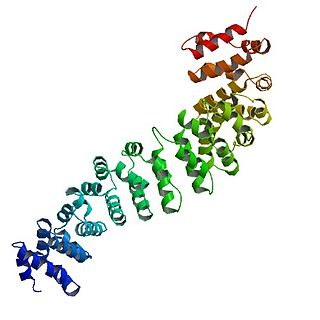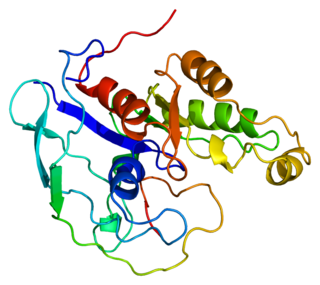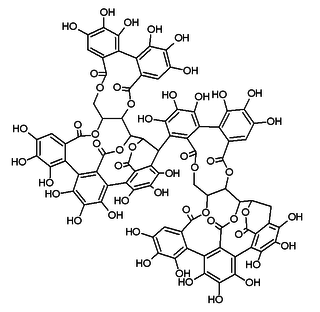 | |
| Names | |
|---|---|
| IUPAC name (46R)-7,8,9,12,13,14,25,26,27,30,31,32,35,36,37-pentadecahydroxy-46-[(3R,4S)-2,3,4-trihydroxy-5-(hydroxymethyl)oxolan-2-yl]-3,18,21,41,43-pentaoxanonacyclo[27.13.3.138,42.02,20.05,10.011,16.023,28.033,45.034,39]hexatetraconta-5,7,9,11,13,15,23,25,27,29(45),30,32,34(39),35,37-pentadecaene-4,17,22,40,44-pentone | |
| Identifiers | |
3D model (JSmol) | |
PubChem CID | |
CompTox Dashboard (EPA) | |
| |
| |
| Properties | |
| C46H34O30 | |
| Molar mass | 1066.748 g·mol−1 |
Except where otherwise noted, data are given for materials in their standard state (at 25 °C [77 °F], 100 kPa). | |
Grandinin is an ellagitannin. It can be found in Melaleuca quinquenervia leaves [1] and in oaks species like the North American white oak ( Quercus alba ) and European red oak ( Quercus robur ). [2] It shows antioxydant activity. [1] It is an astringent compound. [3] It is also found in wine, red [4] or white, [5] aged in oak barrels.
It is a castalagin glycoside [6] by binding of the pentose lyxose. [3] It contains a nonahydroxytriphenic acid moiety.
It suppresses the phosphorylation of the epidermal growth factor receptor in human colon carcinoma cells. [6]

















